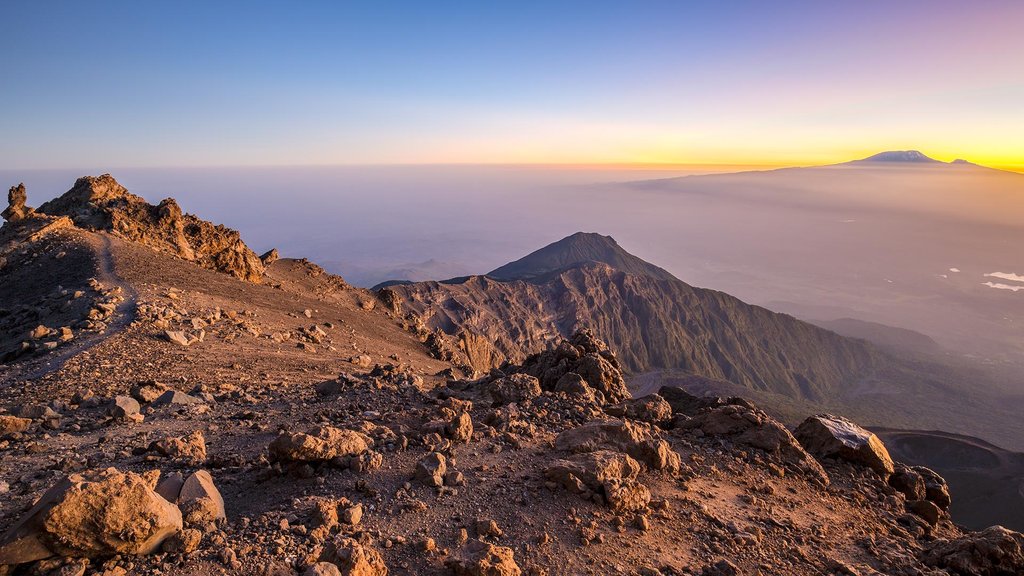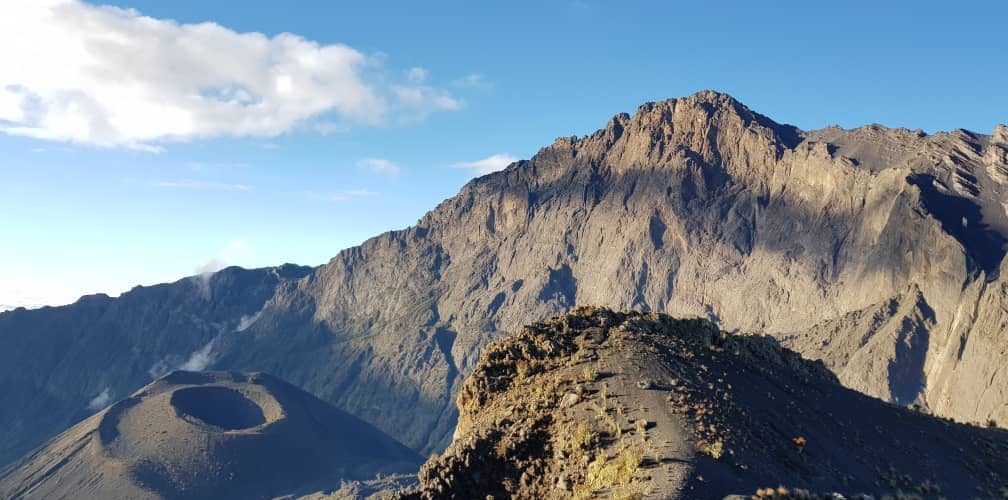- Home
- About
- SAFARIS
- Climbing
- Zanzibar
- Destinations
- Travel Bureau
Mount Meru is a dormant stratovolcano located in the Arusha Region of northern Tanzania, Africa. It is the second-highest peak in Tanzania, standing at an impressive 4,566 meters (14,980 feet) above sea level, just after Mount Kilimanjaro, the highest peak in Africa.
Mount Meru in Tanzania is described as follows:
Physical Features: Mount Meru is characterized by its distinct conical shape, often shrouded in mist in the early morning. The mountain is part of the Arusha National Park and is surrounded by lush, diverse ecosystems, including forests, grasslands, and alpine meadows.
Cultural Significance: Mount Meru holds significant cultural importance for the local communities, particularly the Meru people who inhabit the area surrounding the mountain. It is considered a sacred place in their traditions and folklore.
Climbing Routes: Mount Meru offers several climbing routes of varying difficulty levels. The most common route is known as the Momella Route, which typically takes three to four days to summit and descend. The climb offers stunning views of the surrounding landscapes, including the nearby Mount Kilimanjaro on clear days.
Wildlife: The slopes of Mount Meru are home to a diverse array of wildlife, including buffalo, elephants, giraffes, and various species of monkeys. The mountain is also known for its rich birdlife, with numerous species of birds inhabiting its forests and alpine zones.
Accommodation: There are accommodation options available for climbers near the base of Mount Meru, including campsites and lodges within the Arusha National Park. These facilities provide a comfortable base for climbers before and after their ascent.
Challenges: While not as high as Mount Kilimanjaro, climbing Mount Meru still presents significant challenges, including altitude sickness, steep terrain, and unpredictable weather conditions. Climbers are advised to be well-prepared and acclimatized before attempting the ascent.
Overall, Mount Meru offers a rewarding climbing experience with breathtaking scenery and rich biodiversity, making it a popular destination for adventure seekers and nature enthusiasts visiting Tanzania.


